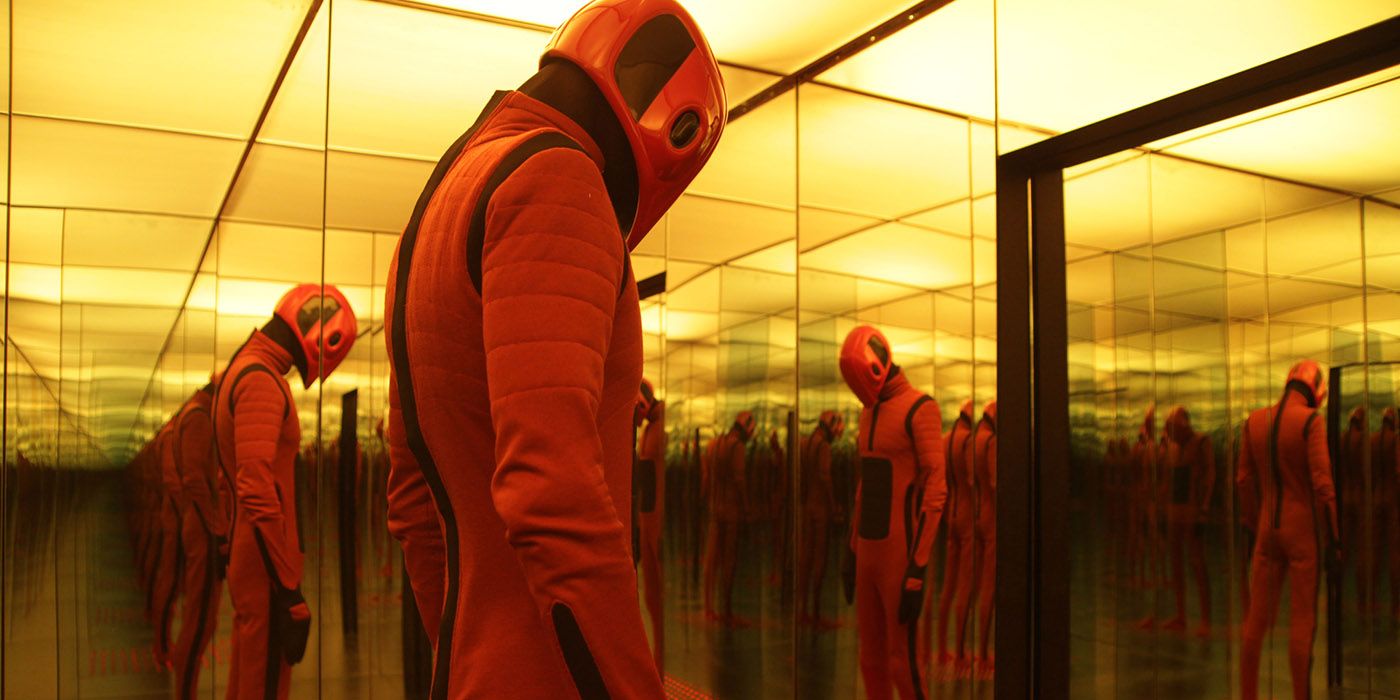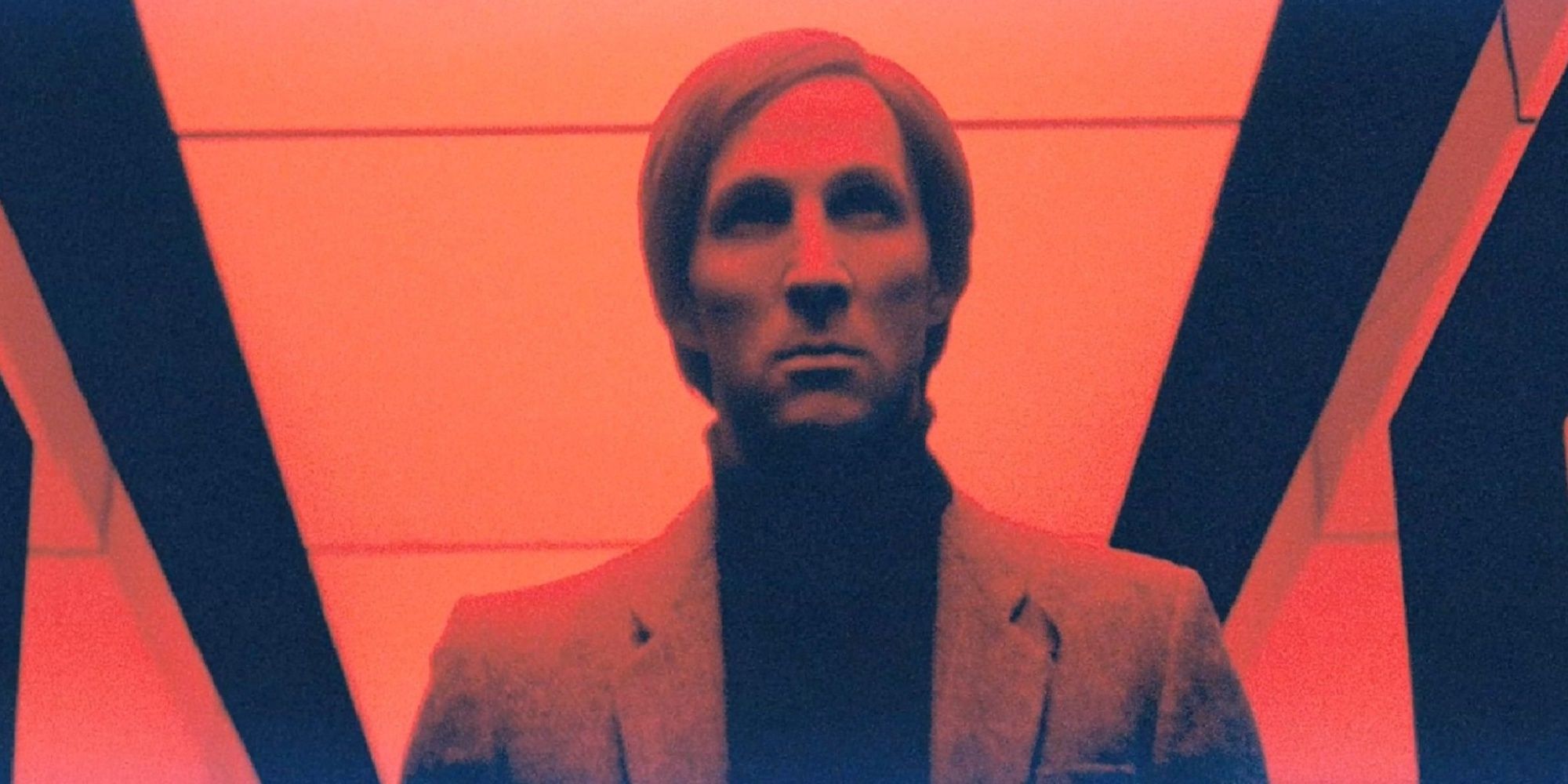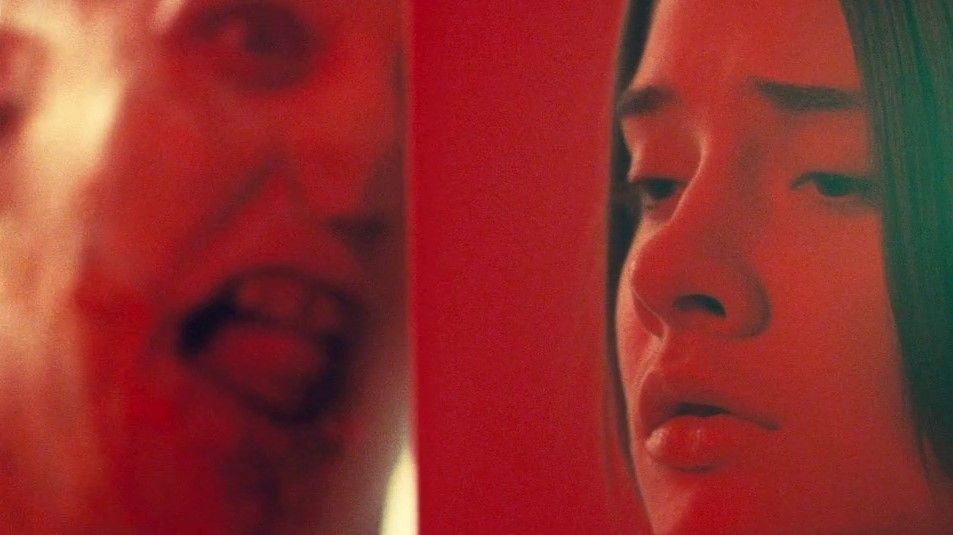It might be too soon to declare Mandy as one of the great cult films of the 2010s, but it’s feeling pretty certain that will be the case. The sophomore feature by Panos Cosmatos, the film’s delightful mix of stylish visuals and high-octane violence — all centered around a typically manic Nicolas Cage performance — ensured it would be irresistible to the cinephiles of the world. Most of the time it’s a retro fever dream which feels custom-made for anyone who loves drowning themselves in '80s nostalgia, but then Cosmatos will smash down on the accelerator and turn things into John Wick by way of a psychedelic nightmare. It’s one hell of a combination, but Cosmatos does a commendable job balancing everything, resulting in an experience unlike anything else.
That is, of course, assuming we don’t mention Cosmatos’s debut, his 2010 sci-fi horror film Beyond the Black Rainbow. The film flew under the radar when it was released, only attracting retrospective attention after Mandy dropped eight years later. Despite this, it has still not come close to equivalent levels of fame, a sentiment that might sound strange on first impressions. On the surface, Beyond the Black Rainbow has a lot in common with its follow-up: a hypnotic visual style, a New Age-inspired score, and enough '80s references to delight any Gen Z’ers who feel they were born in the wrong decade. If that wasn’t enough, it also features a plot about a young girl with psychic powers trapped in a shadowy research facility — a description that, for anyone who’s spent more than five minutes on the internet, will conjure images of Stranger Things.
A Melting Pot of Influences
But Beyond the Black Rainbow is a far different beast, eschewing the popcorn thrills of Stephen King, John Carpenter, and Steven Spielberg for a more atmospheric and cerebral experience that feels closer to a Stanley Kubrick or Andrei Tarkovsky film. It’s slow, and while Mandy wasn’t about to break the land speed record, it at least capped things off with high-energy set pieces that appeared to have been ripped from a heavy metal music video. Black Rainbow, meanwhile, has its foot on the brakes for so long you’ll think the driver has fallen asleep. There’s minimal dialogue, few characters and fewer locations, and little in the way of action that doesn’t involve two people staring at each other through panes of glass. It’s essentially a two-hour mood piece, wallowing in its own style with such commitment that those enamored by its direction will be utterly mesmerized for its duration… all the while everyone else will be bored senseless. Factor in the lack of a major star, and it’s easy to see why it hasn’t undergone a revival despite hitting many of the same beats as Mandy. It is the absolute definition of a cult film, and even if Cosmatos becomes one of the biggest names in contemporary horror, it’s unlikely Black Rainbow will be anything but that.
It’s a true shame, because not only is it an excellent film for those willing to give its unique design a chance, it’s also one of the finest examples of how to construct an '80s throwback. Cosmatos makes no attempt to hide his influences, and fans of this niche of cinema will find much fun picking apart every homage, but crucially he uses these influences to create his own style rather than merely languishing in references to other films. It’s clear Black Rainbow was made by someone with an unwavering love for cinema, with Cosmatos taking inspiration from such an eclectic range of sources that it becomes impossible to mistake this love letter as an attempt to bandwagon off a successful sub-genre. This shouldn’t be surprising given that his father was George P. Cosmatos, director of such guilty pleasures as Rambo: First Blood Part II and Cobra, and having his formative years take place during such an important period for both his father’s career and pop culture in general definitely left a mark on a young Panos Cosmatos. The line between tribute and rip-off is a thin one, but by pushing the film through the distant haze of a half-remembered nostalgic dream, Cosmatos is able to make something truly special.
Style Over Substance — But That's a Good Thing
Beyond the Black Rainbow makes no attempt to obfuscate that its style takes center stage over substance, so its plot being a tad threadbare shouldn’t surprise anyone. The year is 1983, and Dr. Barry Nyle (Michael Rogers), the psychopathic owner of a New Age research facility called the Arboria Institute, is conducting experiments on a young girl called Elena (Eva Allan) that has caused her to gain psychic powers. Supporting characters include the abusive nurse Margo (Rondel Reynoldson) and a mysterious entity called a Sentionaut that acts as a makeshift henchman, but the focus is kept on Nyle and Elena as they struggle for the upper hand in this hellish environment. Its premise of science medaling in God’s domain evokes memories of a David Cronenberg film, but Cosmatos always keeps the aesthetic and thematic aspects of the film at the forefront. The simple nature of the story will not be for everyone, but viewers who can get behind Cosmatos’s direction will be treated to a pure sensory experience only the cinematic medium can provide.
And what an experience it is. People who like creating collages of pretty shots will find much to love here, with Cosmatos and cinematographer Norm Li crafting one of the greatest visual achievements of its era. The sterile corridors and minimalist architecture of the Arboria Institute are both beautiful and disturbing in equal measure, often resembling the bedroom at the end of 2001: A Space Odyssey — albeit one bathed in enough vivid colors to make Dario Argento jealous. Natural lighting is an alien concept here, with the deliberately unrealistic look giving these environments a surreal and unsettling quality that fits the depraved nature of its story. The heightened use of color also makes the 1966 flashback even more breathtaking by comparison, with Cosmatos stripping away everything save for a few black outlines to create one of the most creative visual sequences in recent years (the term ‘acid trip’ has never described something better). The use of 35mm and an out-of-date Panavision Panaflex Gold II camera gives the film a retro look that digital with some post-production effects slapped over it could never compete with, making Black Rainbow appear like a lost film that has recently been unearthed from the darkest corners of a studio vault. Combine this with a moody synth soundtrack and an editing style that sees every shot lasting twice as long as it should, and you have everything you need for a film only a select group of cinephiles will enjoy.
Shadows of Cronenberg and Kubrick
But films pulling from this age of cinema is hardly a rare occasion. In fact, having a Cronenberg-inspired story, Carpenter-inspired score, and Kubrick-inspired visuals is practically the bare minimum for an '80s-inspired film. Beyond the Black Rainbow adheres to these hallmarks and many others, so why is it a standout when compared to its competition? The answer comes in two parts. Partially it’s because Cosmatos remembers to draw inspiration from both mainstream and obscure sources that proves his love for '80s cinema is genuine as opposed to him trying to cash in on the latest fad (how many films have explicit references to Phase IV and Begotten?), but more importantly it’s because he understands how to weaponize a reference for his own gain, using it as a jumping off point to explore new concepts rather than wallowing in what has come before.
For example, the shadow of Cronenberg’s obsession with body horror looms large over Black Rainbow, but those films always kept their focus on the characters within those perverted worlds and the repercussions their actions had on themselves and others. Dead Ringers or The Fly would be but a flicker of their potential without their excellent protagonists, but Black Rainbow has no interest in such things. Nyle and Elena stay as archetypes the entire runtime, with Cosmatos’ desire to keep them as metaphors for the film’s overarching themes overruling deep characterization. Similarly, while Kubrick's films employed clean camerawork to photograph equally clean environments, he did so with subtle images that avoided drawing attention to their own brilliance. In Black Rainbow’s case, it’s impossible to avoid noticing the bold color palette that dominates every frame. This mindset applies to every influence, with Cosmatos twisting them just enough that they start to resemble one of the Arboria Institute’s experiments. This is a building sealed off from the outside world, a time capsule of the '60s mindset that has become deformed beyond recognition in the ensuing 20 years… where better to set a film made by someone who’s spent 30 years reflecting on their influences.
But the most important piece of the equation comes with the last shot. Following her escape and the subsequent death of Nyle, the credits roll over a now free Elena as she ventures into a vast and unknown world. But before Cosmatos calls time, he includes a shot of a Sentionaut action figure in a brief post-credits stinger. What this means is left ambiguous, but when considering how important Cosmatos’ childhood was in the creation of this film, such a simple image has the power to recontextualize everything. Cosmatos has spoken openly about his frequent visits to a video rental store during his youth, daydreaming about what adventures lay beyond the VHS packaging he gazed longingly at for hours. Black Rainbow is his attempt to turn those fantasies into reality, and considering the film takes place in the same year he first visited that store, it’s not inconceivable that the final shot is Cosmatos’s own bedroom, the rest of the film being the vivid imaginations of an overexcited child. It would explain why the film is such a melting pot of different filmmakers, and also opens the door for countless reinterpretations of the film’s narrative. Or perhaps that’s a reductive way of looking at things. Like all good mysteries, the answer is not forthcoming — exactly what makes films like this so fascinating to discuss.
Beyond the Black Rainbow is not for everyone. Indeed, its idle pacing and bare-bones plot may prove too much for even the diehard fans of '80s-inspired art, but for those who live and breathe in this glorious corner of cinema then it should be required viewing. Cosmatos’s total commitment to his vision allows him to create an utterly singular experience that still remembers to pay tribute to his forbears, and referring to it by such derogatory terms as pastiche is patently unfair. The individual pieces may be familiar, but together they become something else entirely.




